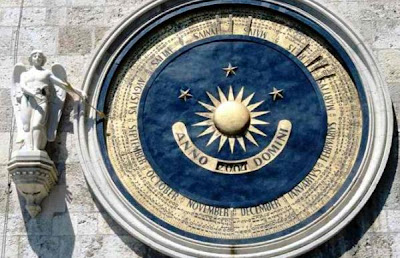Messina is the third largest city in the island of Sicily, Italy. The city that is home to the locally important international fair and a city that has been a Roman Catholic Archdiocese and Archimandrite since 1548.
Sure enough, no visit to Messina is complete without watching this midday performance of the Worlds largest mechanical clock tower because every feature on this 200-foot clock tower is a display of Messina’s rich history, vigour, and diligence.
When the clock hits midday, church bells are struck by two ten foot bronze statues representing the heroines who saved Messina during the Sicilian Vespers war (a 20 year 13th cent. conflict between the French, Anjoin, and Pope on one side, vs. the Sicilians and Aragonese on the other).
Immediately following the chimes, a lion, that represents the strength of the city, waves his flag, wags his tail, turns his head to face the piazza and roars three times. As if awakened by the mighty lion, a rooster that ironically represents awakening, flaps his wings, raises his head, and crows three times.
As Ave Maria blares throughout the piazza, an angel appears bearing a letter for the Madonna, who is greeted by Saint Paul and a retinue of Messinesi ambassadors, each bowing in reverence as they pass.
The machinery is made up of partial devices with gears and levers, self-contained in their individual operation corresponding to the various scenes; it is run and gets its kinetic energy from a powerful counterweight mechanism of clockwork, set in the central storey of the building.
Other Highlights of Messina, Sicily:
Messina Cathedral that owns the third largest organ in Italy and the third all over Europe.
The pale marble Fontana di Orione built in 1553 depicts a lounging Orion, the mythical founder of Messina. The fountain was constructed by Giovanni Angelo Montorsoli (pupil to Michelangelo) to commemorate the construction of Messina's aqueduct - the city's houses were the first in Sicily to receive running water. The figures that adorn it represent the Rivers Tiber, Nile, Ebro and Camaro.
The Tempio Votivo di Cristo Re (Shrine of Cristo Re) which was built in 1900 in the Baroque style. It has a crypt with a shrine inside that is a memorial to Italian soldiers.
The Church of the Annunciation of the Catalans which show the cylindrical apse and high dome. It dates from the late Norman period and it was transformed in the 13th century. It shows some Arabic influences and the only building to have survived the 1908 earthquake without major damage.
Last but definitely not the least, The sanctuary of Madonna di Montalto that is very prominent on the hill of Caperrina. According to Wikipedia it was the first church rebuilt after the earthquake, and the sanctuary is in the tradition of a church in defense of Messina besieged by the French during the War of the Vespers (Our Lady of Victories).



















No comments:
Post a Comment